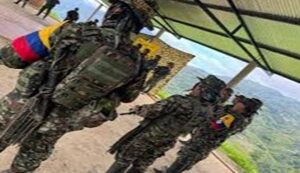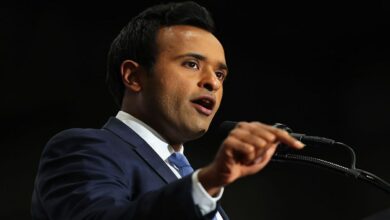Host city Cali has been put on high alert following threats from guerrilla groups
BOGOTA: For a summit aimed at stopping humanity’s voracious destruction of environment, thousands of delegates from across the globe are arriving in Colombia. The host city, Cali, is on high alert due to threats from guerrilla groups.

Beginning on Monday, October 21, the highly anticipated United Nations biodiversity conference will be guarded by over 11,000 Colombian police and military, with assistance from UN and US security officials.
The world’s largest conference on environmental preservation is scheduled to take place every two years and is expected to draw some 12,000 attendees, including 140 government ministers and seven heads of state.
The UN’s Convention on Biological Diversity (CBD) will hold its 16th Conference of the Parties (COP16) from October 1–November 1.
With a “Peace with Nature” theme, its pressing responsibility is to devise financing and monitoring systems that will enable the achievement of 23 UN objectives set in 2022 to “halt and reverse” the extinction of species by 2030.
The event has been clouded by a warning from Colombia’s left-wing guerrilla organization, EMC, asking international delegations to stay away.
The organization, which is suspected of engaging in drug trafficking and illicit mining, made the warning in response to military searches in the southwest Cauca region.
The next major city to the area under EMC authority is Cali.
The mayor of Cali, Alejandro Eder, has promised that the city is “ready” for the COP16, while President Gustavo Petro has said that security is “guaranteed”.
OUR NATURE’S “IN PERIL.”
The delegates had a challenging task ahead of them.
The United Nations has set a 2030 deadline of thirty percent land and marine areas to be protected; five years remain to accomplish this target.
As of the COP16 deadline, just 29 out of the 196 nations that have ratified the UN biodiversity treaty have submitted their national policies, and financing is woefully inadequate.
According to a study released on Thursday by a consortium of non-governmental organizations, just 2.8% of the world’s seas were “effectively” protected. By 2030, the percentage would not rise to 10% at the present pace.
Sixty-six percent of the seas have deteriorated, and three-quarters of the Earth’s terrestrial area has undergone considerable alteration since 1970, according to the intergovernmental research and policy organization IPBES.
Over 25% of evaluated species face extinction, according to the International Union for Conservation of Nature (IUCN), which maintains a red list of endangered plants and animals.
Prior to the negotiations, Lin Li, senior director of global policy and advocacy at WWF, warned AFP, “Our system is in peril.”
“The system that is… supporting us as a human species, which is the natural system, ecological systems, is being attacked.”
The Kunming-Montreal Global Biodiversity Framework, which was agreed in 2022, outlines 23 ambitious aims for 2030 in an attempt to buck the trend.
These include eliminating harmful agriculture subsidies, combating invasive species, cutting down on chemical usage, and recovering thirty percent of damaged habitats.
At COP16, the goals will be evaluated. Among them is the requirement that wealthy nations provide US$20 billion annually by 2025, increasing to US$30 billion by 2030, to support the preservation of ecosystems in the developing world, which is home to the majority of the world’s biodiversity.
At this COP, Dao Nguyen, senior program manager for conservation action at IUCN, told AFP, “We are hoping to hear a lot more pledges.”
“If there are none, it’s going to be quite a deflated COP.”
Determining a framework for compensating the populations from whom genetic information derived, say, for medicinal purposes, would benefit is one of the main objectives of the conference.
Colombia, the host nation, is among the most biodiverse in the world, and Petro has prioritized environmental conservation.
However, the nation has had difficulty recovering from sixty years of violent confrontation between the state, drug gangs, right-wing paramilitaries, and leftist guerrillas like the EMC.





